判决
联想的Chromebook Plus 14(14M9610)有很多优点。它采用全新的联发科 Kompanio Ultra 910 技术,电池续航时间长,应用性能一流。
四个扬声器可提供清晰、丰富的音频播放,明亮的 OLED 屏幕可呈现绚丽的色彩。现代化的功能和坚固的机身给人留下了美好的印象。不足之处是,显示屏的光亮表面会产生令人分心的反光,在明亮的环境中很难使用,而且在持续重负载的情况下,机箱会明显发热。
Pros
Cons
规格
外壳与连接
虽然联想Chromebook Plus 14 的底板是带有纹理图案的塑料,但机身大部分是铝和玻璃材质。银色的设计看起来很有质感,不过在显示屏盖子上有一个明显的凸起,上面安装了 500 万像素网络摄像头和机械式隐私快门。
这款 Chromebook 配备了最新的 Wi-Fi 7 标准,可实现最快的无线连接。端口选择非常实用,提供两个 USB-C 端口、一个 USB-A 端口和一个音频插孔,满足日常使用的最重要需求。此外,指纹传感器还提供快速免密码登录功能。
» Notebookcheck多媒体笔记本电脑Top 10排名
» Notebookcheck游戏笔记本电脑Top 10排名
» Notebookcheck低价办公/商务笔记本电脑Top 10排名
» Notebookcheck高端办公/商务笔记本电脑Top 10排名
» Notebookcheck工作站笔记本电脑Top 10排名
» Notebookcheck亚笔记本电脑Top 10排名
» Notebookcheck超级本产品Top 10排名
» Notebookcheck变形本产品Top 10排名
» Notebookcheck平板电脑Top 10排名
» Notebookcheck智能手机Top 10排名
» Notebookcheck评测过最出色的笔记本电脑屏幕
» Notebookcheck售价500欧元以下笔记本电脑Top 10排名
» Notebookcheck售价300欧元以下笔记本电脑Top 10排名
尺寸比较
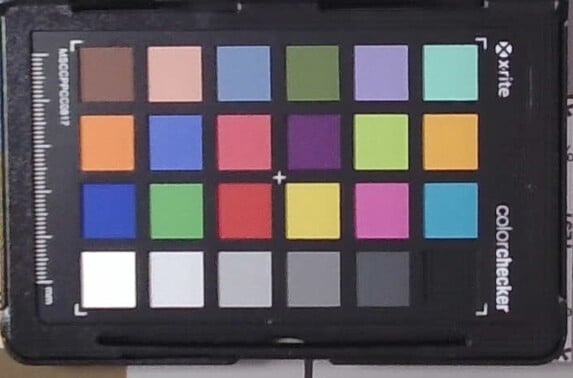
可持续性
在可持续发展方面,Chromebook 的表现基本上是积极的,但在透明度方面还有待提高。虽然联想尚未公布该机型的详细产品碳足迹(PCF)报告,但该设备已获得的 TCO 认证。据估计,其生产碳足迹约为 237 千克二氧化碳。
无风扇设计是可持续发展的一大亮点,高效的 ARM 处理器使其成为可能。这种被动冷却方式对用户来说非常好,因为它意味着设备始终保持完全静音,而且由于没有风扇吸附灰尘或需要清洁,还简化了长期维护。在此基础上,联想还在其支持网站上提供了详细的维修指南,甚至在机箱上和机箱内放置了方便的二维码,可直接链接到说明。
输入设备
显示屏
Chromebook 的一个突出特点是它的 14 英寸屏幕。它采用 16:10 宽高比的全高清分辨率(1920 x 1200 像素),可清晰显示所有内容。不过,它的真正优势在于 OLED 技术及其出色的色彩呈现。该面板还通过了 HDR 500 True Black 认证,可为兼容内容提供特别动态和生动的画面。
我们的测量证实了其出色的色彩还原能力。对于在 ChromeOS 上进行基于网络的工作至关重要的 sRGB 色彩空间完全覆盖,达到 100%。Delta E 2000 仅为 1.65,色彩偏差几乎感觉不到。在我们的测试设备上,并未达到所宣传的 400 cd/m² 的峰值亮度。不过,应该指出的是,这台特殊的样品已经经过了数人之手进行评测,可能已经超过了平均使用水平,这可能会影响其亮度。
| |||||||||||||||||||||||||
Brightness Distribution: 99 %
Center on Battery: 377.5 cd/m²
Contrast: 26986:1 (Black: 0.014 cd/m²)
ΔE ColorChecker Argyll: 1.59 (sRGB) 3.01 (Display P3) 4.12 (Adobe RGB1998) 7 (Rec 2020) Calman: 1.65 | ∀{0.5-29.43 Ø4.79}
ΔE Greyscale 1.59 (Argyll) Calman: 2.4 | ∀{0.09-98 Ø5}
106.3% sRGB (Calman 2D)
Gamma: 2.25, Argyll:
CCT: 6391 K, Argyll: 6354 K
| Lenovo Chromebook Plus 14, Kompanio Ultra 910 OLED, 1920x1200, 14", 60 Hz | Lenovo Chromebook Duet 11M889 IPS, 1920x1200, 11", 60 Hz | Acer Chromebook Plus CB514-4H IPS, 1920x1080, 14", 60 Hz | Asus Chromebook CM14 CM1402CM2A-EK0048 CMN 14E5, TN, 1920x1080, 14", Hz | Lenovo Flex 5 Chrome 14IAU7 83EK002GE 1920x1200, 14", 60 Hz | Samsung Galaxy Chromebook Plus XE550XGA AMOLED, 1920x1080, 15.6", 60 Hz | |
|---|---|---|---|---|---|---|
| Response Times | -561% | -693% | -731% | -598% | -16% | |
| Response Time Grey 50% / Grey 80% * (ms) | 2.4 ? | 37 ? -1442% | 35 ? -1358% | 37 ? -1442% | 30.8 ? -1183% | 2.8 ? -17% |
| Response Time Black / White * (ms) | 18.8 ? | 23 ? -22% | 24 ? -28% | 22.4 ? -19% | 21.2 ? -13% | 18.8 ? -0% |
| PWM Frequency (Hz) | 250 | 2000 ? | 24800 ? | 60 | ||
| PWM Amplitude * (%) | 25 | 80 -220% | 33 -32% | |||
| Screen | -345% | -230% | -540% | -261% | -105% | |
| Brightness middle (cd/m²) | 377.8 | 423.1 12% | 306 -19% | 230 -39% | 344 -9% | 415 10% |
| Brightness (cd/m²) | 379 | 397 5% | 284 -25% | 204 -46% | 333 -12% | 416 10% |
| Brightness Distribution (%) | 99 | 89 -10% | 85 -14% | 81 -18% | 94 -5% | 97 -2% |
| Black Level * (cd/m²) | 0.014 | 0.2845 -1932% | 0.1871 -1236% | 0.433 -2993% | 0.263 -1779% | 0.0722 -416% |
| Contrast (:1) | 26986 | 1487 -94% | 1635 -94% | 531 -98% | 1308 -95% | 5748 -79% |
| Colorchecker dE 2000 * | 1.65 | 4.76 -188% | 4.88 -196% | 8.91 -440% | 4 -142% | 3.84 -133% |
| Colorchecker dE 2000 max. * | 4.37 | 11.69 -168% | 8.39 -92% | 19.81 -353% | 7 -60% | 13.93 -219% |
| Greyscale dE 2000 * | 2.4 | 11.7 -388% | 6.3 -163% | 10.3 -329% | 2 17% | 2.7 -13% |
| Gamma | 2.25 98% | 2.186 101% | 2.081 106% | 2.239 98% | 2.174 101% | 2.271 97% |
| CCT | 6391 102% | 8417 77% | 7117 91% | 11724 55% | 6757 96% | 6995 93% |
| Total Average (Program / Settings) | -453% /
-404% | -462% /
-323% | -636% /
-578% | -430% /
-328% | -61% /
-81% |
* ... smaller is better
Display Response Times
| ↔ Response Time Black to White | ||
|---|---|---|
| 18.8 ms ... rise ↗ and fall ↘ combined | ↗ 17.8 ms rise | |
| ↘ 1 ms fall | ||
| The screen shows good response rates in our tests, but may be too slow for competitive gamers. In comparison, all tested devices range from 0.1 (minimum) to 240 (maximum) ms. » 40 % of all devices are better. This means that the measured response time is similar to the average of all tested devices (20.3 ms). | ||
| ↔ Response Time 50% Grey to 80% Grey | ||
| 2.4 ms ... rise ↗ and fall ↘ combined | ↗ 1.4 ms rise | |
| ↘ 1 ms fall | ||
| The screen shows very fast response rates in our tests and should be very well suited for fast-paced gaming. In comparison, all tested devices range from 0.165 (minimum) to 636 (maximum) ms. » 10 % of all devices are better. This means that the measured response time is better than the average of all tested devices (31.7 ms). | ||
Screen Flickering / PWM (Pulse-Width Modulation)
| Screen flickering / PWM detected | 250 Hz Amplitude: 25 % | ||
The display backlight flickers at 250 Hz (worst case, e.g., utilizing PWM) . The frequency of 250 Hz is relatively low, so sensitive users will likely notice flickering and experience eyestrain at the stated brightness setting and below. In comparison: 53 % of all tested devices do not use PWM to dim the display. If PWM was detected, an average of 8152 (minimum: 5 - maximum: 343500) Hz was measured. | |||
性能
联想Chromebook Plus Gen 10 标志着 ChromeOS 格局的重大转变,这主要归功于它的处理器。它是首款采用全新联发科 Kompanio Ultra 910 的设备,这是一款专为 Chromebook 设计的高端片上系统(SoC)。
值得注意的是,它为 "Chromebook Plus "阵容引入了基于 ARM 的处理器,而这一高性能设备类别迄今为止一直只采用英特尔和 AMD 的芯片。通过这次发布,联想设备将成为新的性能参照标准。
系统芯片和系统性能
联发科芯片的性能令人印象深刻。在各种基准测试中,Kompanio Ultra 910 Kompanio Ultra 910在各种基准测试中,Kompanio Ultra 910 明显领先于竞争对手,其性能水平是最近评测过的任何Chromebook 都无法比拟的。无论是处理日常任务(如打开大量标签浏览)还是运行生产力应用程序,都能带来非常流畅的用户体验。
Kompanio Ultra 910 还能轻松处理要求更高的 3D 计算。它集成了 Immortalis-G925 MC11 图形处理器,可与英特尔的 Iris Xe 图形芯片媲美。从基准测试结果来看,联想新推出的 Chrome 14M9610 确实是Chromebook Plus 的最佳替代产品之一。
| Lenovo Chromebook Plus 14, Kompanio Ultra 910 Immortalis-G925 MC11, Kompanio Ultra 910, 256 GB UFS 4.0 Flash | Lenovo Chromebook Duet 11M889 Mali-G57 MP3, Kompanio 838, 128 GB eMMC Flash | Acer Chromebook Plus CB514-4H UHD Graphics 32EUs, i3-N305, Kingston OM8PGP4128Q-AA | Asus Chromebook CM14 CM1402CM2A-EK0048 Mali-G52 MP2, Kompanio 520, 128 GB eMMC Flash | Lenovo Flex 5 Chrome 14IAU7 83EK002GE UHD Graphics 64EUs, i3-1315U, SK hynix HFS512GEJ4X112N | Samsung Galaxy Chromebook Plus XE550XGA UHD Graphics 64EUs, Core 3 100U | |
|---|---|---|---|---|---|---|
| Geekbench 6.5 | -73% | -56% | -30% | -25% | ||
| GPU Vulkan (Points) | 18367 | 1861 -90% | 5493 -70% | 8753 -52% | 8436 -54% | |
| Multi-Core (Points) | 7659 | 2291 -70% | 4329 -43% | 5403 -29% | 6620 -14% | |
| Single-Core (Points) | 2535 | 1003 -60% | 1146 -55% | 2323 -8% | 2389 -6% | |
| CrossMark | -60% | -17% | -74% | 11% | 6% | |
| Responsiveness (Points) | 943 | 381 -60% | 1004 6% | 258 -73% | 1308 39% | 1137 21% |
| Creativity (Points) | 1476 | 550 -63% | 1050 -29% | 340 -77% | 1421 -4% | 1439 -3% |
| Productivity (Points) | 1329 | 554 -58% | 1012 -24% | 393 -70% | 1389 5% | 1368 3% |
| Overall (Points) | 1324 | 524 -60% | 1027 -22% | 348 -74% | 1391 5% | 1360 3% |
| PCMark for Android | -82% | -65% | -86% | -31% | -17% | |
| Work 3.0 (Points) | 18722 | 10843 -42% | 11631 -38% | 6924 -63% | 12986 -31% | 14174 -24% |
| Storage 2.0 random write int. (MB/s) | 11.85 | 1.21 -90% | 1.59 -87% | 1.09 -91% | 1.65 -86% | |
| Storage 2.0 seq. write int. (MB/s) | 602.71 | 76.4 -87% | 292.4 -51% | 81.31 -87% | 208.14 -65% | |
| Storage 2.0 random read int. (MB/s) | 100.51 | 4.84 -95% | 43 -57% | 6.6 -93% | 206.92 106% | |
| Storage 2.0 seq. read int. (MB/s) | 4020.1 | 113.16 -97% | 374.61 -91% | 99.17 -98% | 3429.91 -15% | |
| WebXPRT 4 | ||||||
| Overall (Points) | 255 | 138 -46% | 194 -24% | 80 -69% | 243 -5% | 259 2% |
| GFXBench 3.1 | ||||||
| 1920x1080 Manhattan ES 3.1 Offscreen (fps) | 217 | 34 -84% | 58 -73% | 15 -93% | 92 -58% | 101 -53% |
| GFXBench | ||||||
| 3840x2160 4K Aztec Ruins High Tier Offscreen (fps) | 35 | 3.6 -90% | 6.2 -82% | 1.4 -96% | 11 -69% | 11 -69% |
| GPUScore: Sacred Path | ||||||
| 2560x1440 Official (fps) | 30.4 | 2.85 -91% | 5.3 -83% | 9.7 -68% | 13.98 -54% | |
| GPUScore: The Expedition | ||||||
| 2560x1440 Official (fps) | 55.73 | 7.43 -87% | 14.8 -73% | 29.1 -48% | 29.65 -47% | |
| 3DMark | ||||||
| Wild Life Extreme (Points) | 5177 | 514 -90% | 203 -96% | 1983 -62% | 2059 -60% | |
| Total Average (Program / Settings) | -78% /
-76% | -59% /
-53% | -86% /
-83% | -40% /
-28% | -35% /
-23% |
排放与能源
噪音排放
联发科 Kompanio Ultra 910 不需要主动散热。因此,Chromebook 在运行时完全静音。
温度
完全静音、无风扇散热所带来的好处在重负载下的表面温度上显而易见。在压力测试中,我们测得键盘周围顶部的局部温度峰值高达 41°C(106°F),设备底部则高达 45°C(113°F)。
不过,在浏览网页、观看视频或使用办公应用程序等日常活动中,温度仍然很低,无需担心。
(±) The maximum temperature on the upper side is 41 °C / 106 F, compared to the average of 34.3 °C / 94 F, ranging from 21.2 to 62.5 °C for the class Office.
(±) The bottom heats up to a maximum of 43 °C / 109 F, compared to the average of 36.8 °C / 98 F
(+) In idle usage, the average temperature for the upper side is 23.1 °C / 74 F, compared to the device average of 29.5 °C / 85 F.
(+) The palmrests and touchpad are cooler than skin temperature with a maximum of 24 °C / 75.2 F and are therefore cool to the touch.
(+) The average temperature of the palmrest area of similar devices was 27.6 °C / 81.7 F (+3.6 °C / 6.5 F).
| Lenovo Chromebook Plus 14, Kompanio Ultra 910 Mediatek Kompanio Ultra 910, ARM Immortalis-G925 MC11 | Lenovo Chromebook Duet 11M889 MediaTek Kompanio 838, ARM Mali-G57 MP3 | Acer Chromebook Plus CB514-4H Intel Core i3-N305, Intel UHD Graphics 32EUs (Alder Lake) | Asus Chromebook CM14 CM1402CM2A-EK0048 MediaTek Kompanio 520, ARM Mali-G52 MP2 | Lenovo Flex 5 Chrome 14IAU7 83EK002GE Intel Core i3-1315U, Intel UHD Graphics 64EUs (Alder Lake 12th Gen) | Samsung Galaxy Chromebook Plus XE550XGA Intel Core 3 100U, Intel UHD Graphics 64EUs (Alder Lake 12th Gen) | |
|---|---|---|---|---|---|---|
| Heat | -4% | 9% | 13% | -17% | -2% | |
| Maximum Upper Side * (°C) | 41 | 38.3 7% | 35.1 14% | 30.4 26% | 40 2% | 39.1 5% |
| Maximum Bottom * (°C) | 43 | 38.1 11% | 41.1 4% | 37.1 14% | 50 -16% | 38.3 11% |
| Idle Upper Side * (°C) | 24 | 31.5 -31% | 23.5 2% | 21.8 9% | 29.7 -24% | 29.1 -21% |
| Idle Bottom * (°C) | 27 | 27.2 -1% | 22.6 16% | 25.9 4% | 35 -30% | 28.1 -4% |
* ... smaller is better
发言人
联想为该系统配置了四个扬声器。它们通过键盘旁边的格栅向上发射声音,并从机箱向下发射声音。这种设置产生了令人惊讶的宽敞和丰富的音效。
Lenovo Chromebook Plus 14, Kompanio Ultra 910 audio analysis
(+) | speakers can play relatively loud (83.8 dB)
Bass 100 - 315 Hz
(±) | reduced bass - on average 9.4% lower than median
(±) | linearity of bass is average (11.9% delta to prev. frequency)
Mids 400 - 2000 Hz
(+) | balanced mids - only 3.5% away from median
(+) | mids are linear (4.5% delta to prev. frequency)
Highs 2 - 16 kHz
(+) | balanced highs - only 0.9% away from median
(+) | highs are linear (1.9% delta to prev. frequency)
Overall 100 - 16.000 Hz
(+) | overall sound is linear (8.9% difference to median)
Compared to same class
» 0% of all tested devices in this class were better, 0% similar, 99% worse
» The best had a delta of 7%, average was 21%, worst was 53%
Compared to all devices tested
» 2% of all tested devices were better, 1% similar, 97% worse
» The best had a delta of 4%, average was 24%, worst was 134%
Apple MacBook Pro 16 2021 M1 Pro audio analysis
(+) | speakers can play relatively loud (84.7 dB)
Bass 100 - 315 Hz
(+) | good bass - only 3.8% away from median
(+) | bass is linear (5.2% delta to prev. frequency)
Mids 400 - 2000 Hz
(+) | balanced mids - only 1.3% away from median
(+) | mids are linear (2.1% delta to prev. frequency)
Highs 2 - 16 kHz
(+) | balanced highs - only 1.9% away from median
(+) | highs are linear (2.7% delta to prev. frequency)
Overall 100 - 16.000 Hz
(+) | overall sound is linear (4.6% difference to median)
Compared to same class
» 0% of all tested devices in this class were better, 0% similar, 100% worse
» The best had a delta of 5%, average was 17%, worst was 45%
Compared to all devices tested
» 0% of all tested devices were better, 0% similar, 100% worse
» The best had a delta of 4%, average was 24%, worst was 134%
耗电量
联想推出了一款非常节能的设备。这一点在与其他设备直接比较时尤为明显,例如 三星Galaxy Chromebook Plus.尽管联发科 Kompanio Ultra 的处理能力明显更高,但在相同的工作负荷下,联想Chromebook 的耗电量要低得多。
与英特尔(Intel)芯片相比,联想 处理器的现代 ARM 架构最大限度地发挥了它的效率优势。
| Off / Standby | |
| Idle | |
| Load |
|
Key:
min: | |
| Lenovo Chromebook Plus 14, Kompanio Ultra 910 Kompanio Ultra 910, Immortalis-G925 MC11, 256 GB UFS 4.0 Flash, OLED, 1920x1200, 14" | Lenovo Chromebook Duet 11M889 Kompanio 838, Mali-G57 MP3, 128 GB eMMC Flash, IPS, 1920x1200, 11" | Acer Chromebook Plus CB514-4H i3-N305, UHD Graphics 32EUs, Kingston OM8PGP4128Q-AA, IPS, 1920x1080, 14" | Asus Chromebook CM14 CM1402CM2A-EK0048 Kompanio 520, Mali-G52 MP2, 128 GB eMMC Flash, TN, 1920x1080, 14" | Lenovo Flex 5 Chrome 14IAU7 83EK002GE i3-1315U, UHD Graphics 64EUs, SK hynix HFS512GEJ4X112N, , 1920x1200, 14" | Samsung Galaxy Chromebook Plus XE550XGA Core 3 100U, UHD Graphics 64EUs, , AMOLED, 1920x1080, 15.6" | Average ARM Immortalis-G925 MC11 | Average of class Office | |
|---|---|---|---|---|---|---|---|---|
| Power Consumption | 37% | 7% | 1% | -35% | -29% | 0% | -142% | |
| Idle Minimum * (Watt) | 2.95 | 1.7 42% | 2 32% | 3.03 -3% | 4.85 -64% | 4.5 -53% | 2.95 ? -0% | 4.53 ? -54% |
| Idle Average * (Watt) | 4.6 | 4.5 2% | 3 35% | 5.7 -24% | 5.35 -16% | 5.21 -13% | 4.6 ? -0% | 7.45 ? -62% |
| Idle Maximum * (Watt) | 6.9 | 4.9 29% | 6 13% | 7.7 -12% | 6.7 3% | 9.44 -37% | 6.9 ? -0% | 8.84 ? -28% |
| Load Average * (Watt) | 6.92 | 4.37 37% | 10.9 -58% | 8.7 -26% | 12.5 -81% | 6.92 ? -0% | 41.5 ? -500% | |
| Load Maximum * (Watt) | 37.9 | 9.98 74% | 33 13% | 11.1 71% | 45 -19% | 43 -13% | 37.9 ? -0% | 62.8 ? -66% |
* ... smaller is better
空闲/游戏/压力测试功耗
电池寿命
联想官方宣称,Chromebook Plus 14(14M9610)的续航时间长达 17 小时。在我们自己进行的 Wi-Fi 网上冲浪测试中,在调整显示屏亮度的情况下,该设备的续航时间达到了令人印象深刻的 15 个多小时。考虑到我们的评测机之前已经使用过,这表明其电池可能已经出现了一些损耗,因此这一结果就更加引人注目了。
这一结果使联想Chromebook 领先于我们迄今为止测试过的所有其他"Chromebook Plus "机型,证明了它在没有外部电源的情况下长时间使用的出色续航能力。
| Lenovo Chromebook Plus 14, Kompanio Ultra 910 Kompanio Ultra 910, Immortalis-G925 MC11, 60 Wh | Lenovo Chromebook Duet 11M889 Kompanio 838, Mali-G57 MP3, 29 Wh | Acer Chromebook Plus CB514-4H i3-N305, UHD Graphics 32EUs, 51 Wh | Asus Chromebook CM14 CM1402CM2A-EK0048 Kompanio 520, Mali-G52 MP2, 42 Wh | Lenovo Flex 5 Chrome 14IAU7 83EK002GE i3-1315U, UHD Graphics 64EUs, 51 Wh | Samsung Galaxy Chromebook Plus XE550XGA Core 3 100U, UHD Graphics 64EUs, 68 Wh | Average of class Office | |
|---|---|---|---|---|---|---|---|
| Battery runtime | |||||||
| WiFi v1.3 (h) | 15.2 | 11.6 -24% | 11 -28% | 12.1 -20% | 9.3 -39% | 13 -14% | 12.5 ? -18% |
笔记本检查评级
联想Chromebook Plus 14 是一款引人注目的设备,其强劲的性能、破纪录的电池续航时间、绚丽的 OLED 显示屏、强大的四扬声器音效以及高品质、精心打造的机身都给人留下了深刻印象。
Lenovo Chromebook Plus 14, Kompanio Ultra 910
- 08/18/2025 v8
Marc Herter
可能的替代方案比较
Image | Model / Review | Price | Weight | Height | Display |
|---|---|---|---|---|---|
| Lenovo Chromebook Plus 14, Kompanio Ultra 910 Mediatek Kompanio Ultra 910 ⎘ ARM Immortalis-G925 MC11 ⎘ 16 GB Memory, 256 GB | Amazon: 1. $772.26 Lenovo Chromebook Plus 83MW0... 2. $898.94 Lenovo Chrome 14M9610 83MW00... 3. $237.15 Lenovo Chromebook 14" FHD To... | 1.2 kg | 15.79 mm | 14.00" 1920x1200 162 PPI OLED | |
| Lenovo Chromebook Duet 11M889 MediaTek Kompanio 838 ⎘ ARM Mali-G57 MP3 ⎘ 8 GB Memory, 128 GB eMMC | Amazon: 1. $199.99 Lenovo Chromebook Duet - 202... 2. $335.00 Lenovo Chromebook Duet Gen 9... 3. $22.99 INSOLKIDON Compatible with L... List Price: 450€ | 874 g | 17 mm | 10.95" 1920x1200 207 PPI IPS | |
| Acer Chromebook Plus CB514-4H Intel Core i3-N305 ⎘ Intel UHD Graphics 32EUs (Alder Lake) ⎘ 8 GB Memory, 128 GB SSD | Amazon: $299.00 List Price: 575€ | 1.4 kg | 20.5 mm | 14.00" 1920x1080 157 PPI IPS | |
| Asus Chromebook CM14 CM1402CM2A-EK0048 MediaTek Kompanio 520 ⎘ ARM Mali-G52 MP2 ⎘ 3.7 GB Memory, 128 GB eMMC | Amazon: $169.00 List Price: 319€ | 1.4 kg | 22 mm | 14.00" 1920x1080 157 PPI TN | |
| Lenovo Flex 5 Chrome 14IAU7 83EK002GE Intel Core i3-1315U ⎘ Intel UHD Graphics 64EUs (Alder Lake 12th Gen) ⎘ 8 GB Memory, 512 GB SSD | Amazon: 1. $23.95 mCover Case ONLY Compatible ... 2. $112.99 LCDOLED Replacement for Leno... 3. $35.91 Original New for Lenovo IP F... List Price: 700€ | 1.6 kg | 21 mm | 14.00" 1920x1200 | |
| Samsung Galaxy Chromebook Plus XE550XGA Intel Core 3 100U ⎘ Intel UHD Graphics 64EUs (Alder Lake 12th Gen) ⎘ 8 GB Memory | Amazon: 1. $7.59 Keyboard Cover for 2024 Sams... 2. $129.99 Samsung 14" Galaxy Chromeboo... 3. $18.39 Alapmk Protective Case for S... | 1.2 kg | 11.8 mm | 15.60" 1920x1080 141 PPI AMOLED |
Transparency
The selection of devices to be reviewed is made by our editorial team. The test sample was provided to the author as a loan by the manufacturer or retailer for the purpose of this review. The lender had no influence on this review, nor did the manufacturer receive a copy of this review before publication. There was no obligation to publish this review. As an independent media company, Notebookcheck is not subjected to the authority of manufacturers, retailers or publishers.
This is how Notebookcheck is testing
Every year, Notebookcheck independently reviews hundreds of laptops and smartphones using standardized procedures to ensure that all results are comparable. We have continuously developed our test methods for around 20 years and set industry standards in the process. In our test labs, high-quality measuring equipment is utilized by experienced technicians and editors. These tests involve a multi-stage validation process. Our complex rating system is based on hundreds of well-founded measurements and benchmarks, which maintains objectivity. Further information on our test methods can be found here.




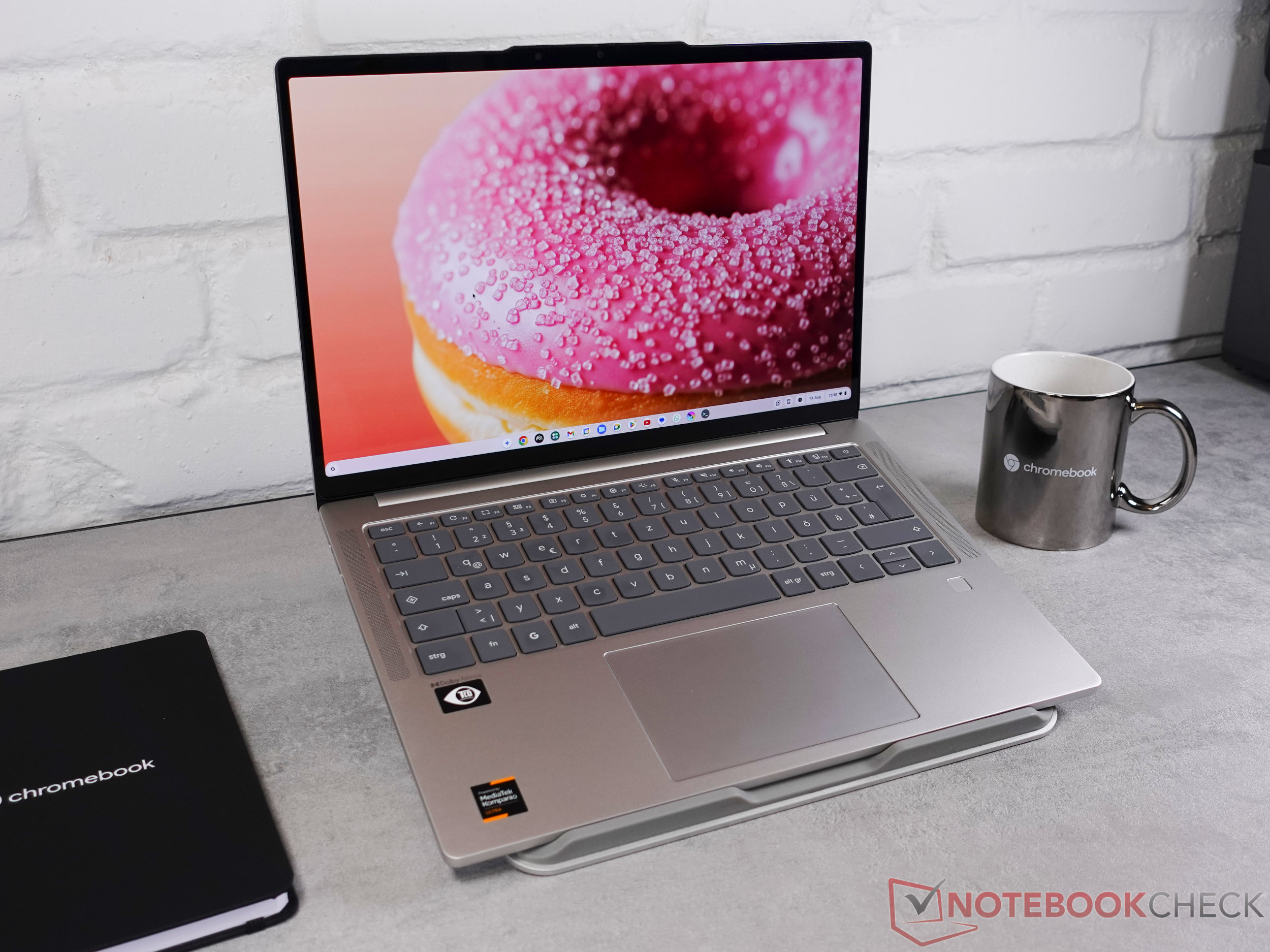









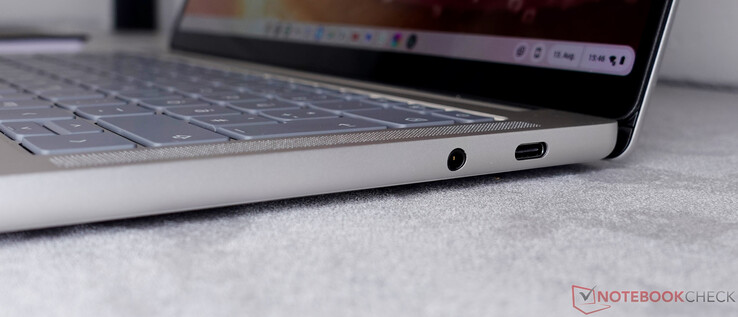
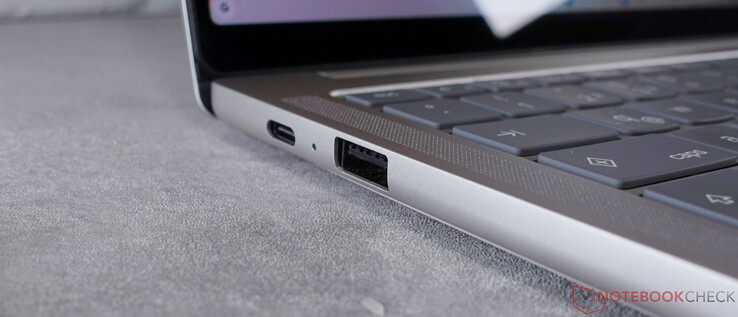
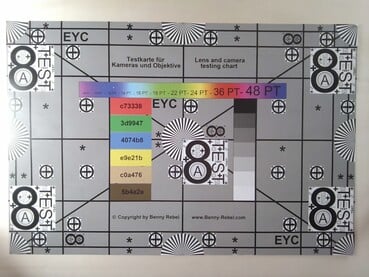

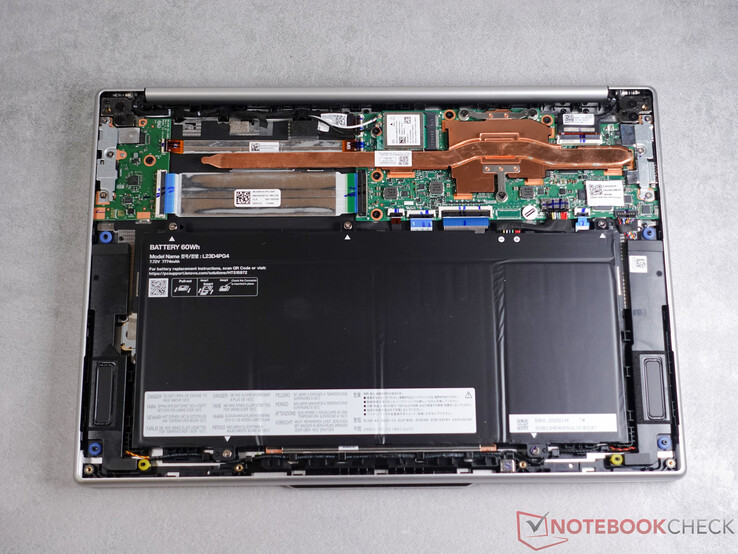
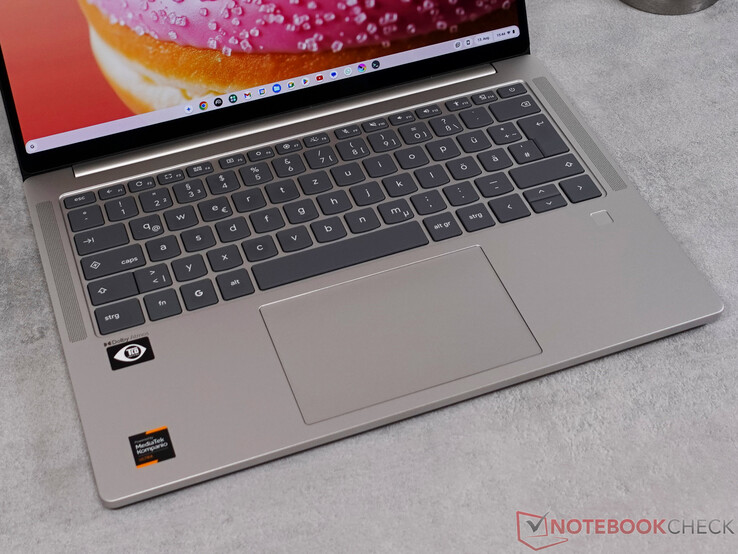
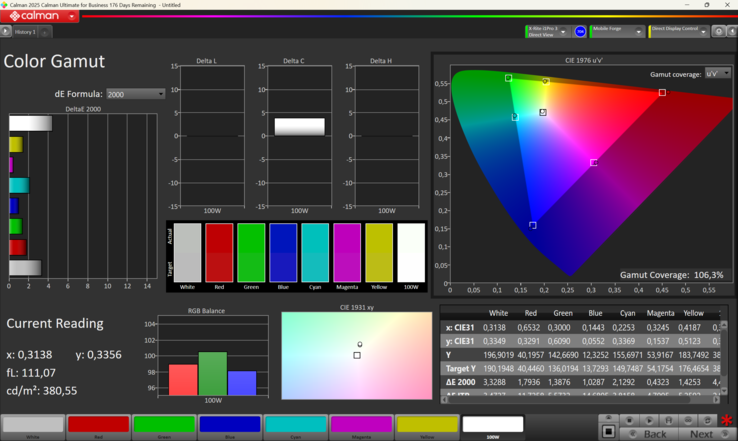



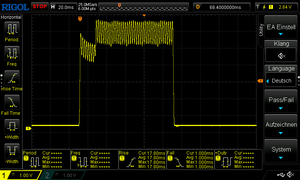
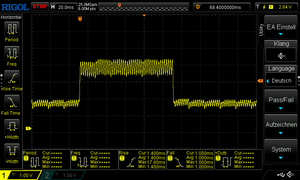
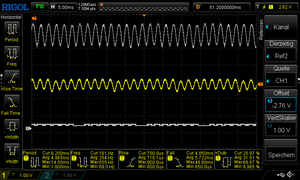
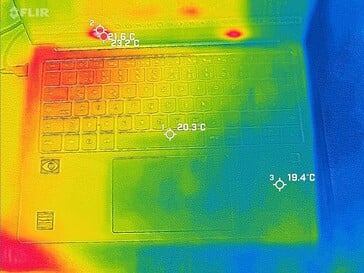
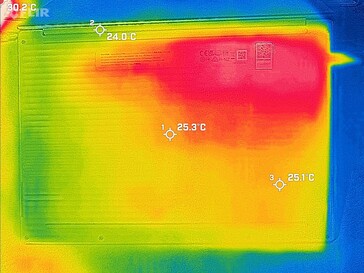
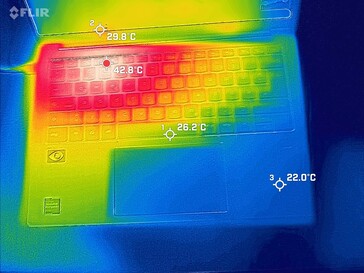
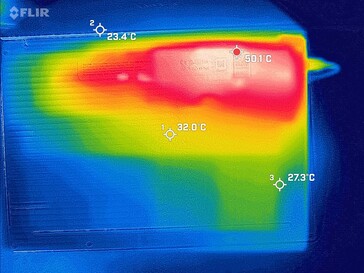
 Total Sustainability Score:
Total Sustainability Score: 














